Outbound Sales: All-in-One Guide to Success in 2023
Casey O'Connor
Contents
- What Is Outbound Sales?
- Is Outbound Sales Effective?
- Benefits of Outbound Sales
- Inbound vs. Outbound Sales
- Types of Outbound Sales Activities
- Who to Hire for Your Outbound Sales Strategy
- The Outbound Sales Process
- B2B vs. B2C Outbound Sales
- Outbound Sales Tools
- Outbound Sales Best Practices
- Sales Metrics to Measure Outbound Sales Success
- How Yesware Enables an Outbound Sales Strategy
Outbound sales refers to the approach in which sales reps — not prospects — are responsible for making the initial contact between a prospect and a business.
In other words, the outbound sales process begins when a salesperson reaches out to a lead who has an unknown interest in the company, with the hopes of nurturing that relationship through the sales funnel to close.
Outbound sales is often treated as synonymous with cold calling and spray-and-pray outreach tactics, and therefore sometimes gets a bad reputation as being gimmicky, time-consuming, and frustrating for salespeople.
But it doesn’t have to be this way. A well-defined, data-backed outbound sales strategy can be a tremendous asset to your bottom line.
In this article, we’ll go over everything you need to know about outbound sales: what it is, how to implement it, and some tools and best practices for the job.
Here’s what we’ll cover:
- What Is Outbound Sales?
- Is Outbound Sales Effective?
- Benefits of Outbound Sales
- Inbound vs. Outbound Sales
- Types of Outbound Sales Activities
- Who to Hire for Your Outbound Sales Strategy
- The Outbound Sales Process
- B2B vs. B2C Outbound Sales
- Outbound Sales Tools
- Outbound Sales Best Practices
- Sales Metrics to Measure Outbound Sales Success
- How Yesware Enables an Outbound Sales Strategy
What Is Outbound Sales?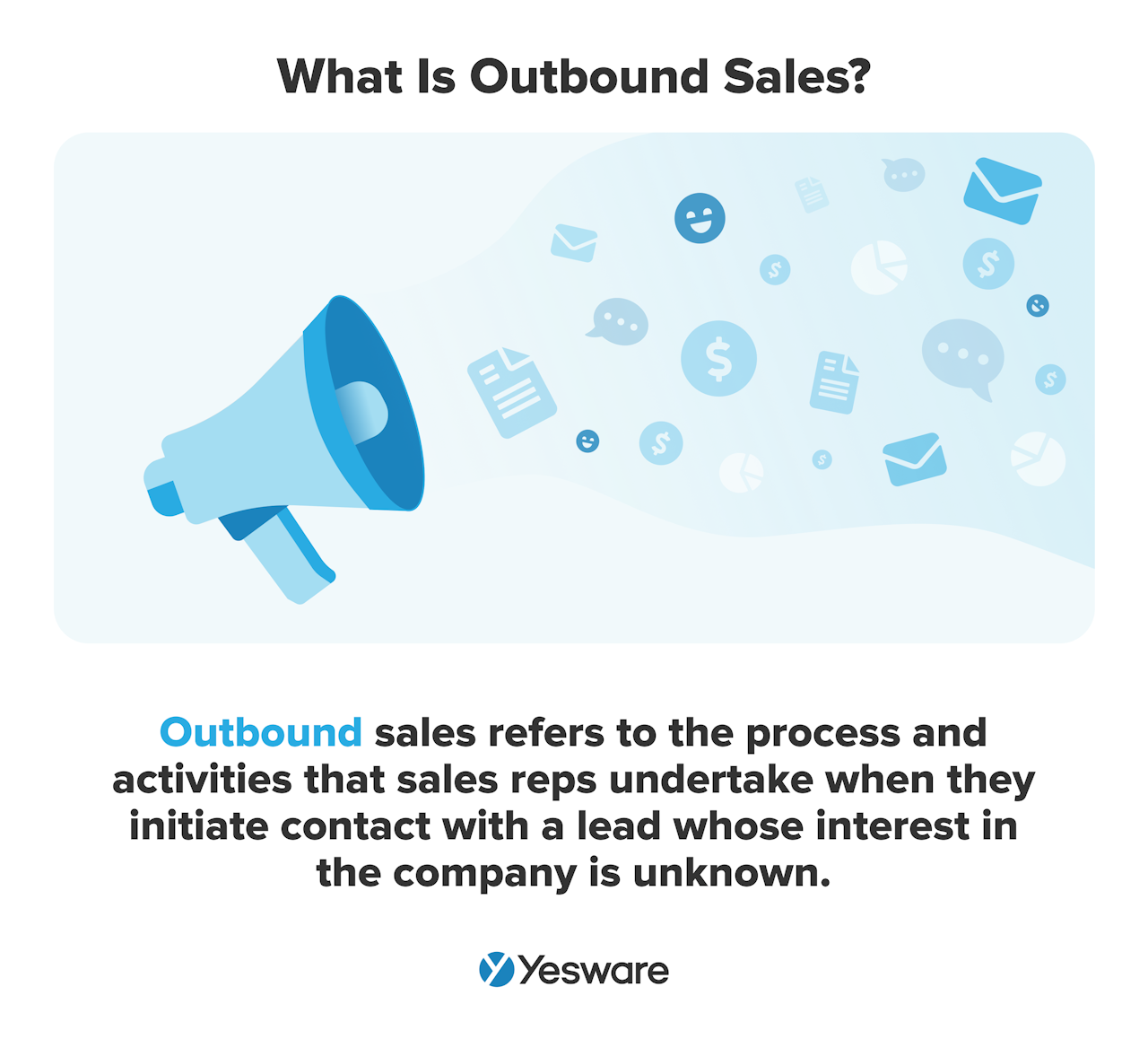
Outbound sales refers to the process and activities that sales reps undertake when they initiate contact with a lead whose interest in the company is unknown.
The entire premise of outbound sales is that it’s dependent upon sales reps being the ones to initiate contact and gauge and/or generate interest.
In contrast, other approaches to sales (like inbound, which we’ll discuss in the next section) typically begin with the lead being the one to initiate contact.
Is Outbound Sales Effective?
We mentioned it earlier, but it bears repeating — outbound selling gets a particularly bad reputation in the sales world. Almost nobody likes to do it. In fact, most sales professionals stay as far away from outbound sales as possible.
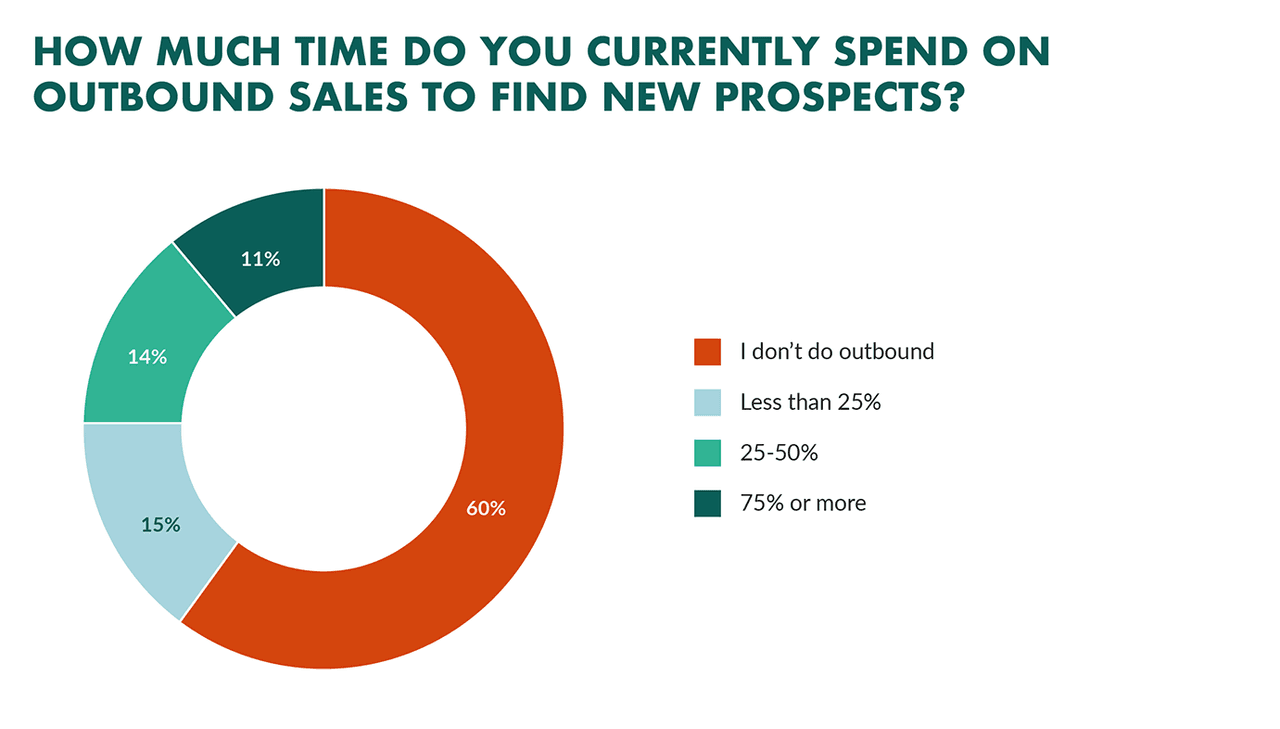
But this is one instance where the data is misleading.
Outbound selling can actually be a really effective component of a successful sales program.
In fact, most sales representatives who practice outbound lead generation report that this sales technique is a critical component of their successful sales program.
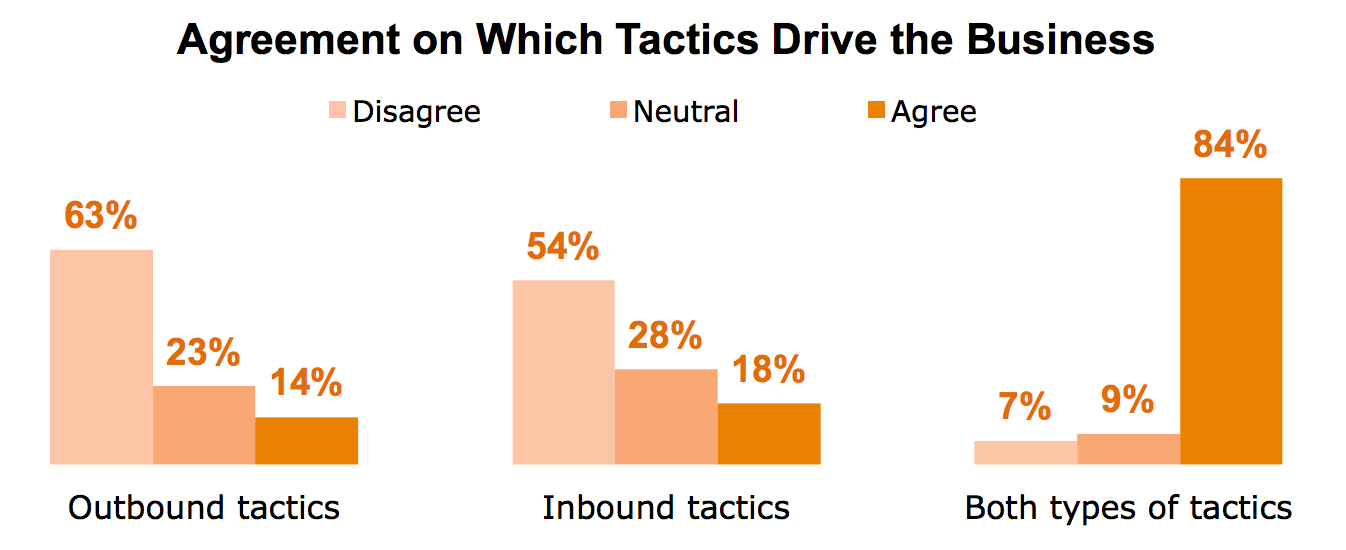
The reason most salespeople harbor such negative thoughts about cold calls (and even the less-intimidating cold email) is that they simply don’t know or don’t understand the strategy behind it.
Research shows that it takes at least five attempts to make contact with most prospects. Despite this, a huge number of sales reps give up after the first attempt. This is why following up in outbound sales is so important. 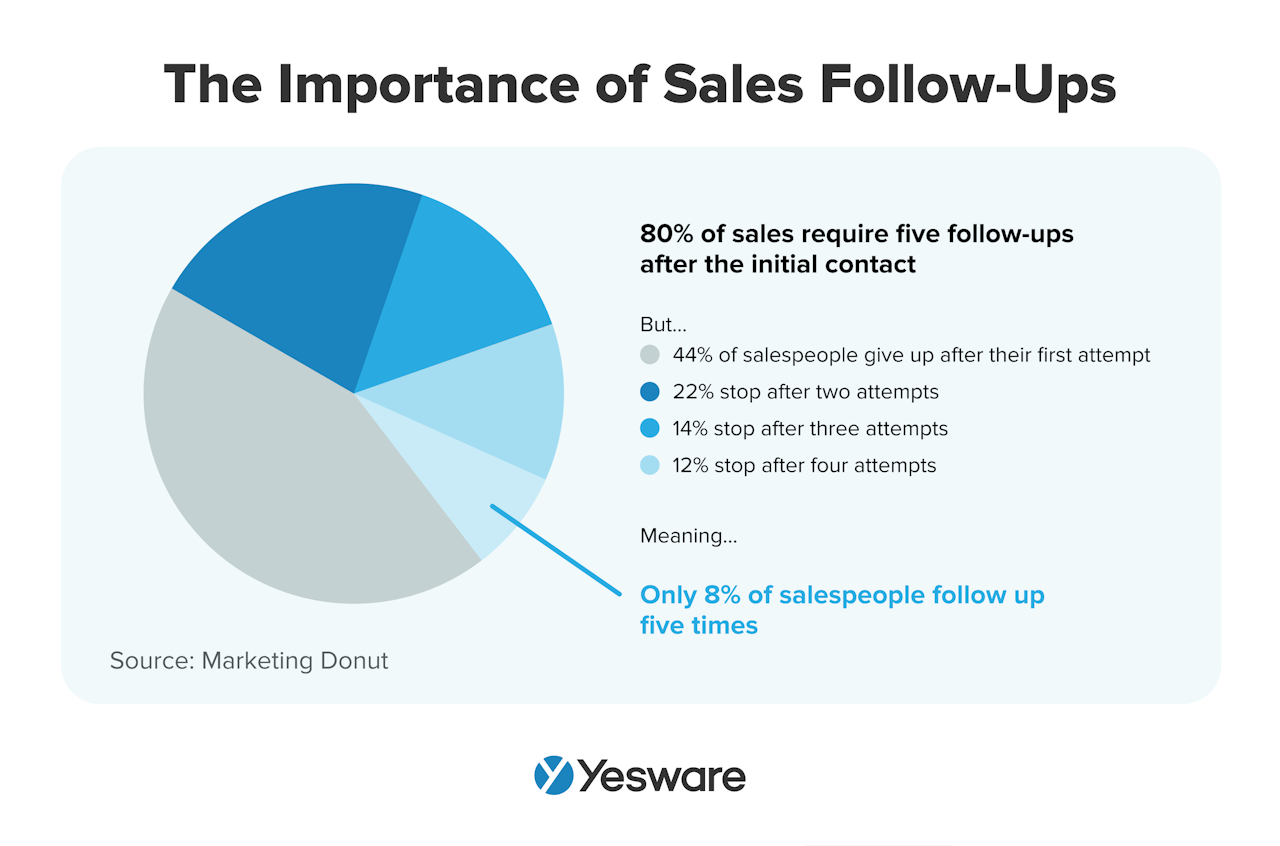 For the majority of sales reps, the name of the game in outbound sales is not giving up. It relies on having:
For the majority of sales reps, the name of the game in outbound sales is not giving up. It relies on having:
- Accurate contact information
- The ability to effectively reach and persuade decision-makers in your target audience
- Tenacity, authenticity, and thick skin when it comes to making cold sales calls and cold email outreach
Outbound sales teams can count on success and productivity if the right approach and tools are available to them.
Benefits of Outbound Sales
Although sophisticatedly intuitive sales platforms have helped inbound sales surge onto the sales scene with great success, the outbound sales approach actually has a number of compelling benefits that make it a great option for many sales teams.
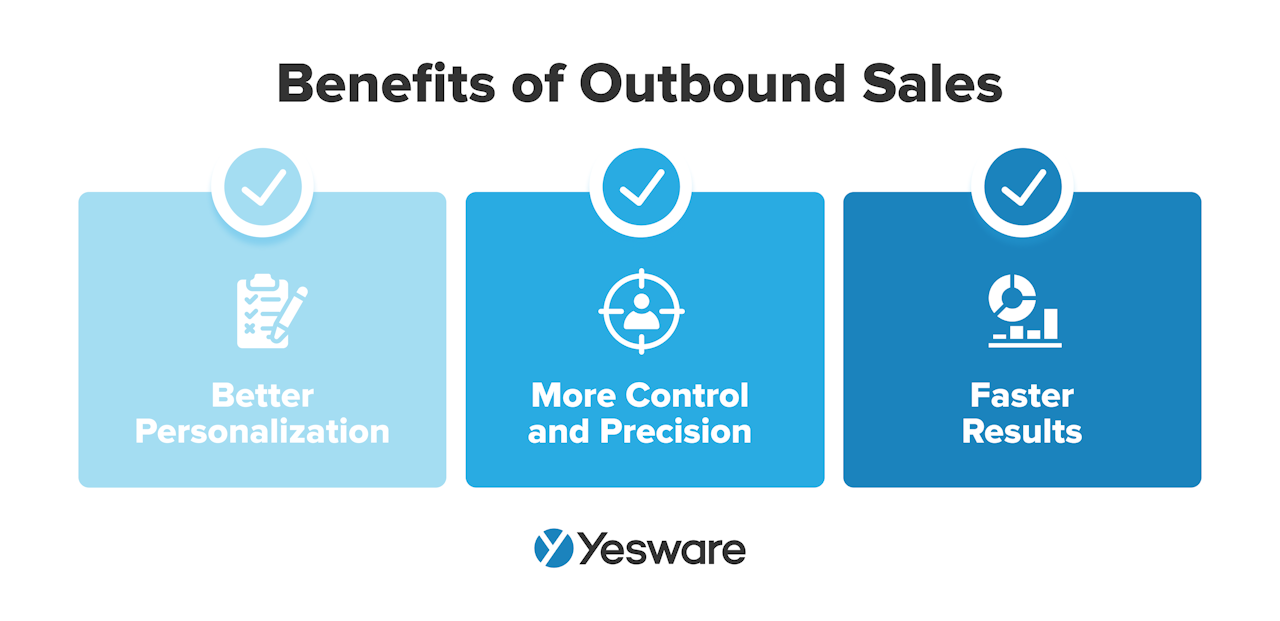
Better Personalization
Outbound sales allow sales reps to create a highly targeted and ultra-personalized sales approach for each and every prospect. And the importance of that cannot be understated — personalization is everything for today’s B2B buyer.

Rather than reacting when prospects approach them, as is the case with inbound sales, sales reps who rely on outbound sales can curate customized sales tactics that are likely to work for each individual buyer they encounter.
More Control and Precision
Outbound sales give sales reps a tremendous amount of control within the sales process. It allows sellers to decide who to approach and when and how it’s time to add them to the sales pipeline.
Sales reps can leverage the outbound sales process by proactively targeting leads who most closely match the ideal customer profile (ICP) and are likely to be best-fit buyers.
Outbound sales give sales reps control over everything from the pace of the sales process to daily productivity.
Faster Results
Outbound sales generally produce faster results than inbound sales do. This is partially because the format gives sellers virtually immediate feedback on the effectiveness of their sales strategies.
It also lets salespeople go out and find new leads whenever they want, rather than waiting for inbound leads to come to them.
Although outbound sales generally require more day-to-day resources than inbound sales, the approach gives sales teams a lot of control and more opportunity for attention to detail.
Inbound vs. Outbound Sales
The major difference between inbound sales and outbound sales stems from who makes the initial contact at the beginning of a sales relationship.
In outbound sales, someone from inside the business — usually a standard sales rep, but sometimes a lead response expert or a sales development rep — reaches out and starts a conversation with a lead.
When the conversation begins, the sales rep typically has little to no information about how interested the lead may be. It’s up to them to prospect and qualify the leads to whom they reach out.
Inbound sales, on the other hand, occur when the lead initiates the conversation. The lead makes the first contact by reaching out to talk or learn more about the product, service, or company. 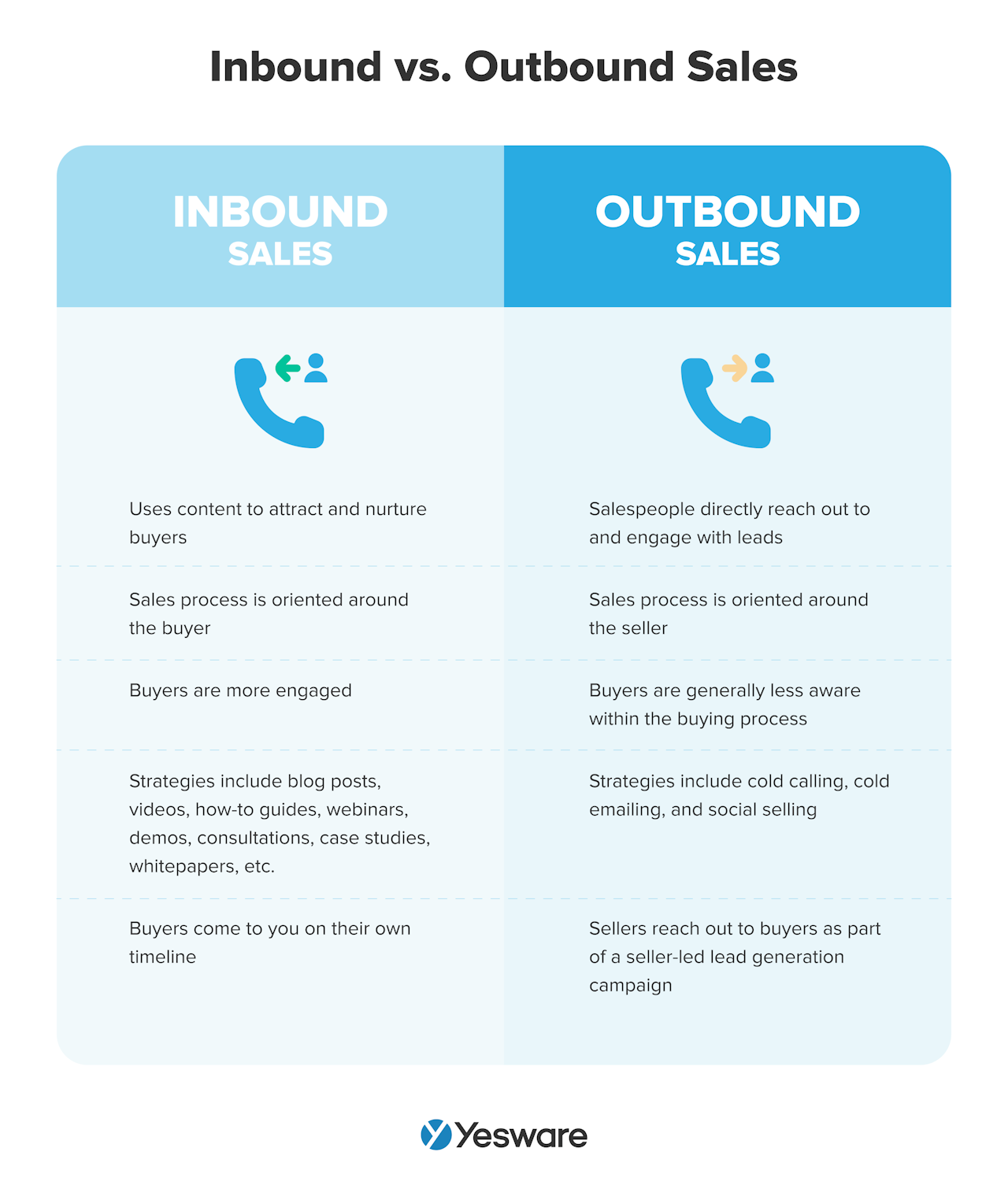 Again, the most successful companies typically find ways to incorporate both strategies into their sales process.
Again, the most successful companies typically find ways to incorporate both strategies into their sales process.
Inbound and outbound sales both have advantages and disadvantages.
On one hand, an inbound sales approach is generally cheaper. Additionally, many sales reps find that this approach allows for more authenticity in creating relationships with potential customers because some of the interest and desire exist before the sales conversation even begins.
On the other hand, the lead qualification process is usually more efficient with outbound sales. This is because sales reps have the opportunity to conduct thorough research before reaching out to prospects. It’s also far easier to measure ROI in outbound sales than it is in inbound sales.
The best strategy (or combination of strategies) for your sales team will ultimately depend on the needs and preferences of your target market, but keep in mind that there is room for both methodologies in a successful sales program.
Types of Outbound Sales Activities
There are three main types of outbound sales activities: cold calling, cold emailing, and some types of social selling.
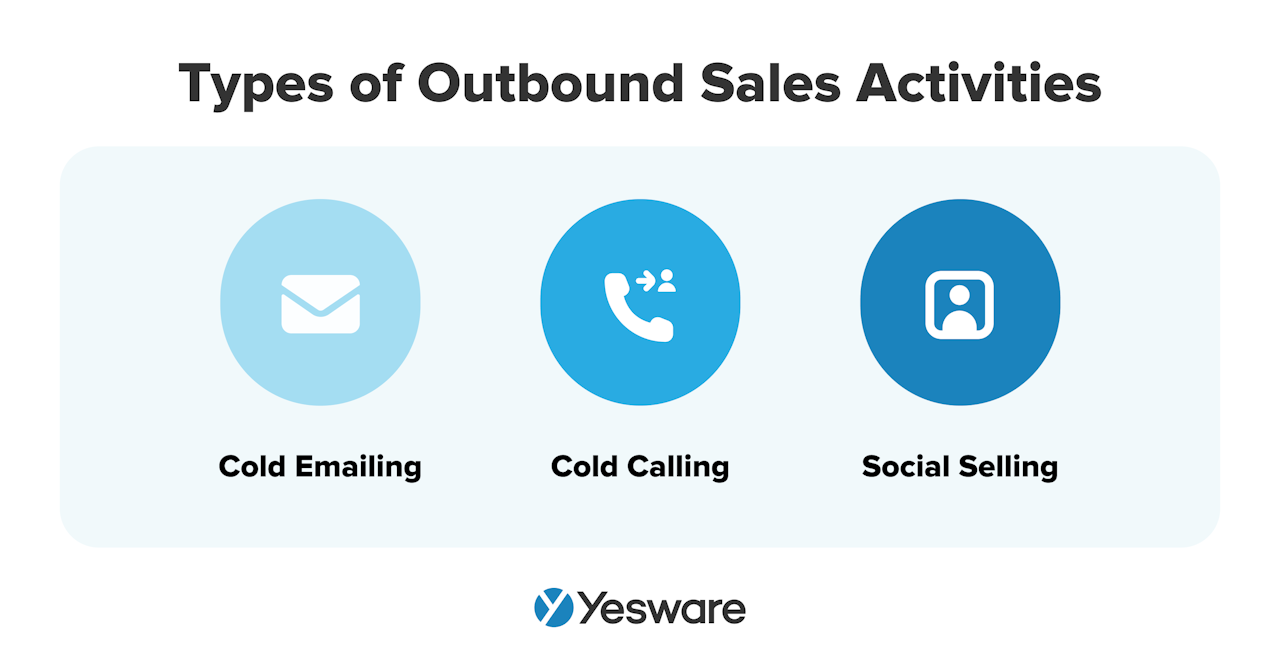
Cold Calling
Cold calling refers to the process of contacting brand new leads with unknown interest by phone. When a sales rep dials a cold call, the rep and the prospect have not yet spoken to one another.
That being said, many sales reps strongly prefer to cold call leads who are at least a little bit “warmed up” via social selling tactics or other subtle advertising strategies.
Cold Emailing
Cold emailing is similar to cold calling, but sales reps reach out via email instead of over the phone.
The primary goal of a cold email is to get the prospect to agree to a sales call or demo. Cold emailing is especially effective for sales reps who want to contact large groups of cold leads all at the same time.
Email automation software can help you set up email drip sequences for cold outreach, which can be a huge help here.
Social Selling
Social selling is usually considered more of an inbound selling strategy, but there are also ways to use it in an outbound sales approach, as well.
Sales reps can leverage their business’s social media platforms to identify and make contact with good-fit prospects.
Once contact is established, social media can help sales reps keep prospects engaged and educated until they’re ready to buy.
Tip: Looking for some cold email templates to improve your cold outreach? Grab our ten proven formulas below.
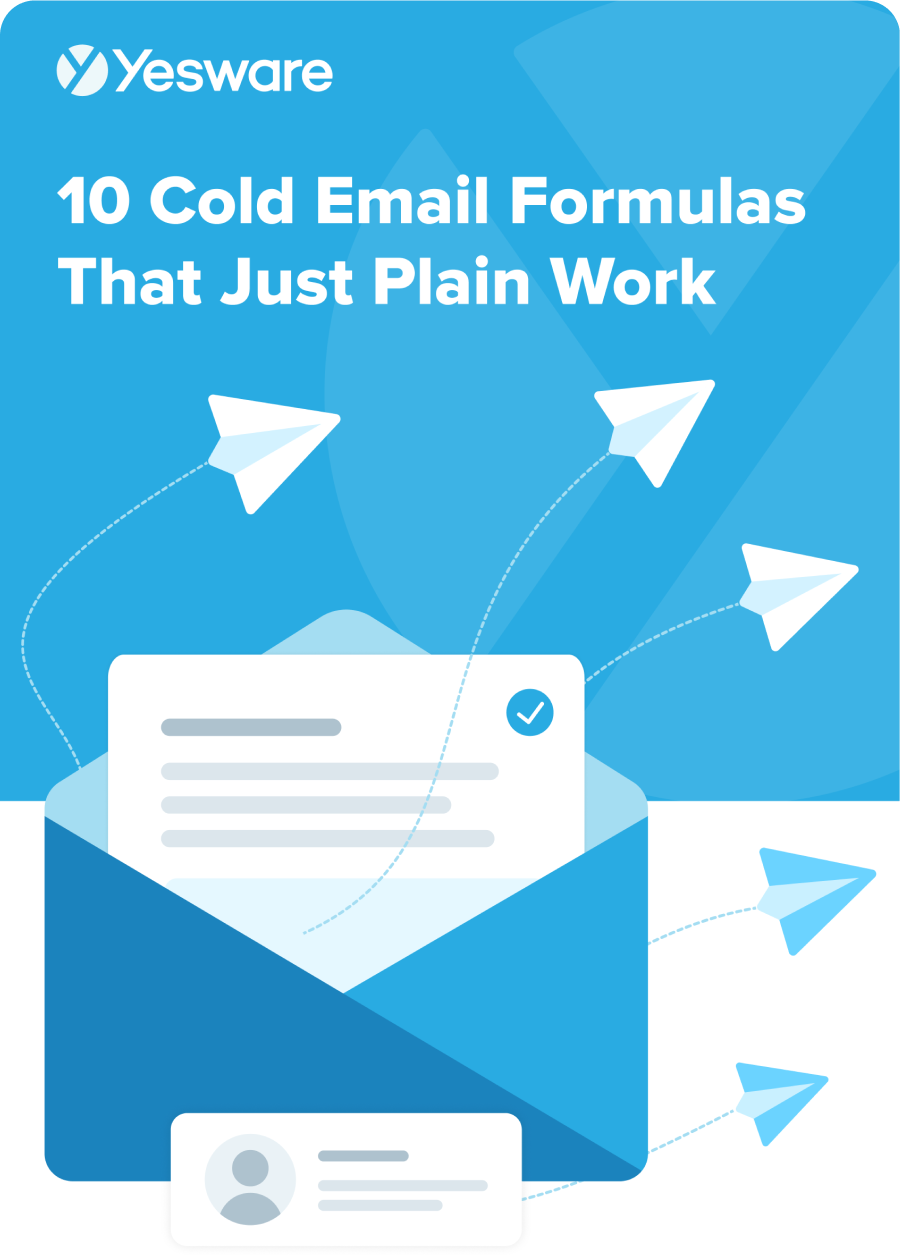 10 Cold Email Formulas That Just Plain WorkSee how B2B sales professionals are using these cold email templates to engage more prospects, fill the top of their funnel and build more sales pipeline faster.
10 Cold Email Formulas That Just Plain WorkSee how B2B sales professionals are using these cold email templates to engage more prospects, fill the top of their funnel and build more sales pipeline faster.
Who to Hire for Your Outbound Sales Strategy
One of the best ways to leverage an outbound sales strategy is to hire and train the right people for the job.
It can be tempting to simply segment your sales team, hand each of them a call list, and tell them to start dialing.
But a random and thoughtless approach to outbound sales is part of what makes it so notorious and will eventually lead to burnt-out sales reps and dead-end cold calls.
Instead, consider hiring and/or training from within for the following specialized outbound sales roles:
Sales Development Representative (SDR)/Business Development Representative (BDR)
These two development reps handle all things prospecting in outbound sales. Some companies treat SDRs and BDRs interchangeably, which is why we’ve lumped them together here, but they actually have slightly different roles.
Both SDRs and BDRs perform prospect research, initiate contact, and can begin the process of nurturing sales relationships with potential customers. SDRs, though, are typically responsible for contacting inbound leads, while BDRs are responsible for cold outreach to outbound leads.
SDRs and BDRs work through the prospecting and qualifying process and then pass qualified leads onto the next stage.
Account Development Representative (ADR)/Account Executive (AE)
For most companies, “account development rep” (sometimes also called “account executive”) is a fancy title for a salesperson.
The ADR receives well-qualified leads from the SDR/BDR and takes over the sales process by nurturing the relationship through the remainder of the funnel until, ideally, the sale is complete.
The account executive handles things like sales demos, overcoming objections, and contract negotiations.
Lead Response Representative
The lead response representative is kind of on the fringe of outbound sales, but worth mentioning nonetheless. The lead response rep is responsible for following up with inbound prospects who have demonstrated a passive interest in a company with noncommittal actions like filling out a form, reading a blog post, or attending a webinar.
These lead response representatives are not quite “outbound” reps because their prospects have typically demonstrated at least mild interest in the company and would technically be considered inbound leads.
However, the lead response rep is typically responsible for those leads who have demonstrated a more passive, less aggressive interest at a particular moment in time. These leads may not be ready for a full-blown sales pitch the way other inbound leads may be; it’s up to a lead response rep to get them closer to that stage.
The breakdown and specialization of outbound sales roles can help define the process and make it more efficient and intentional.
The Outbound Sales Process
The following steps will help you and your team get started with the outbound selling process.
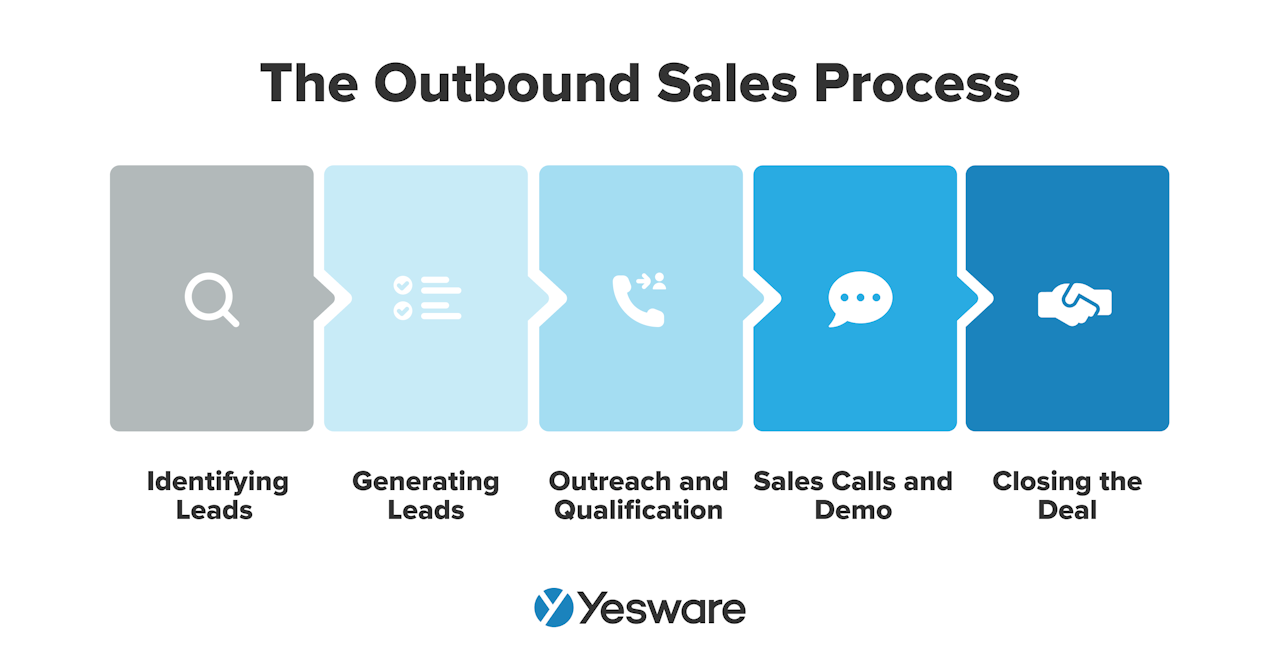
1. Identifying Leads
The first step in the outbound sales process is identifying which leads you plan to target. This step is inherently excluded from inbound selling, so it’s one of the most important and impactful steps to get right. This is where outbound sellers gain a lot of their leverage.
Make sure your sales and marketing teams have aligned to create detailed ICP and buyer personas. Who are you selling to? What are their pains, challenges, and needs? Who are the decision-makers within your target companies? These details need to be fully fleshed out in order to maximize your outbound reach. 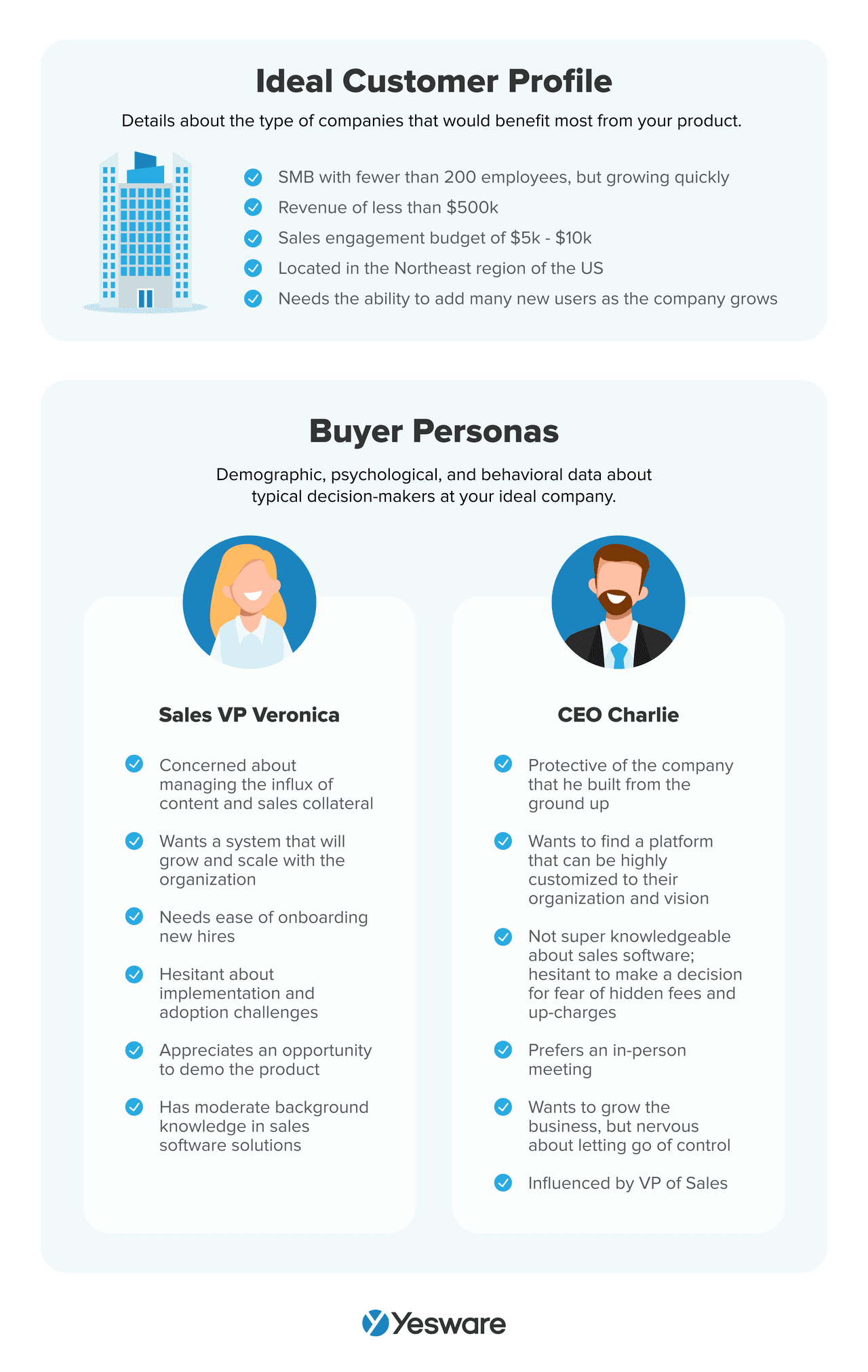 To the best of your ability, create smaller segments of your lead list that personalize it further. The list is very likely to be composed of companies from a variety of verticals; you may also sell several different products. The smaller the sub-group, the more targeted your sales approach can become.
To the best of your ability, create smaller segments of your lead list that personalize it further. The list is very likely to be composed of companies from a variety of verticals; you may also sell several different products. The smaller the sub-group, the more targeted your sales approach can become.
2. Generating Leads
Once you know the type of customer you’re looking for, it’s time to start populating your pipeline with their contact information.
There are many ways to generate leads and locate contact information, including in-house lead generation, LinkedIn and other social media profiles, or even third-party prospecting platforms that scrape website data for marketing and sales teams.
3. Outreach and Qualification
When your pipeline is full of leads ready to be contacted, it’s time to start your cold outreach. Depending on your preference and the buyer’s, you may decide to reach out via email or phone call.
Your initial cold outreach should be succinct but personalized and relevant to their needs despite your unfamiliarity.
Your goal in the first conversation is to qualify the lead and determine whether or not they should remain in the pipeline. Open-ended questions can be very effective during this step of the process. 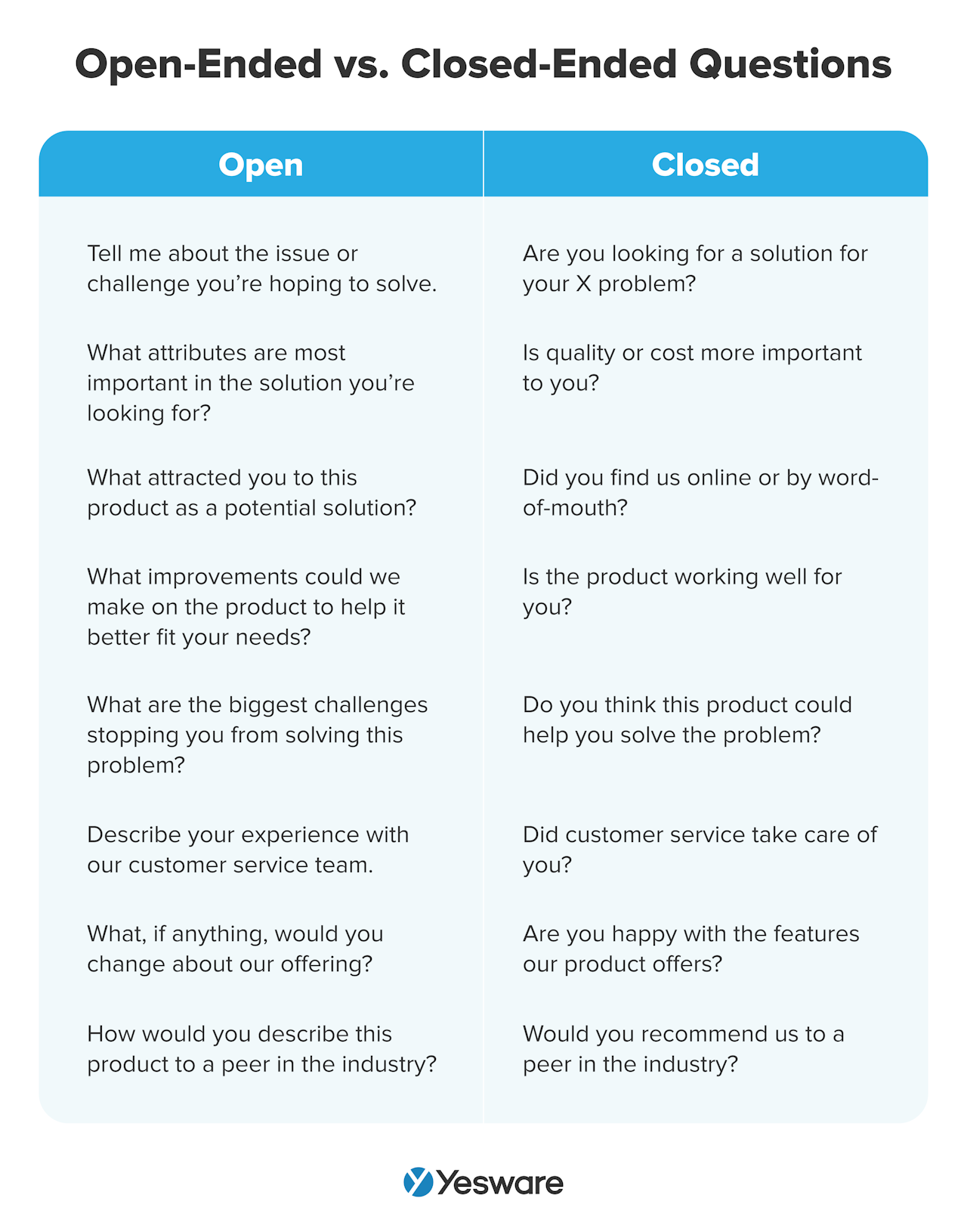 Be prepared to follow up several times after your initial contact; remember, most sales require at least four follow-ups before the buyer gets to yes.
Be prepared to follow up several times after your initial contact; remember, most sales require at least four follow-ups before the buyer gets to yes.
4. Sales Calls and Demo
For prospects who are determined to be a good fit for your offer, the sales rep’s next step is to try to encourage them to participate in a demo or sales presentation. This is the rep’s chance to show the outbound lead just how well their product can resolve their specific pain points and challenges.
This part of the process can be time-consuming but also very exciting and productive if you’ve qualified your leads properly.
Sales reps can expedite this part of the process by identifying and working directly with decision-makers. And, just like every stage of the outbound sales process (in fact, perhaps in this one more than any other), your pitch needs to be targeted, relevant, and highly personalized.
5. Closing the Deal
For prospects who are a good fit and ready and willing to buy, the outbound sales process concludes with the close. Here is where the prospect signs a contract, and the opportunity officially converts to closed-won.
B2B vs. B2C Outbound Sales
The outbound sales approach will look different for every company. This will depend on product offerings, target market, and business goals.
In B2B sales, the outbound approach typically requires significantly more follow-up at the top of the funnel, as well as a higher level of interaction throughout the funnel as a whole.
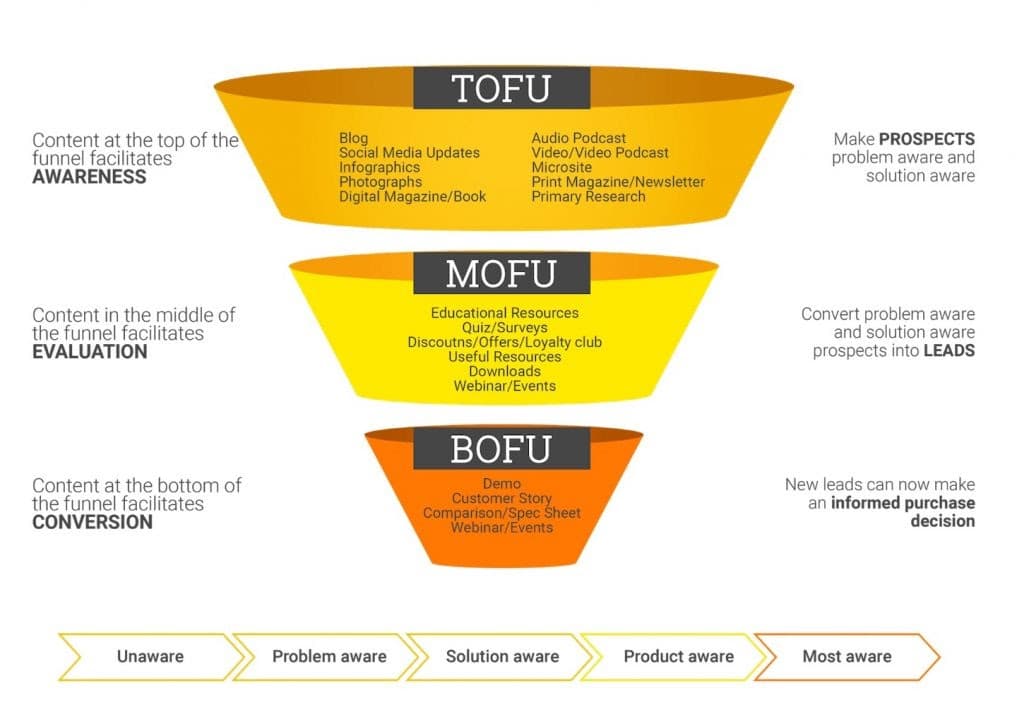 As a result, the outbound sales cycle for B2B sales is usually longer and more drawn out.
As a result, the outbound sales cycle for B2B sales is usually longer and more drawn out.
Because so much of the job relies on managing communication and follow-up, it’s critically important that outbound B2B sales reps are consistent in logging their actions into their CRM. The process relies on efficient communication; effective use of outbound tools is a must.
Outbound sales for B2C companies can be a bit more challenging because of the more transactional nature of B2C sales. Sales reps in these positions usually sell lower-ticket items. These reps will typically need to reach out to a much higher number of prospects than B2B sales reps.
Prospecting in these cases is much more about strategy and volume than it is about finding the best fit and building a relationship.
Outbound Sales Tools
With so much of the success of outbound sales reliant on the efficiency of communication, it’s important that your sales team has the right tools at their disposal to make the process easier.
There are many types of tools you can use to improve your outbound sales process.
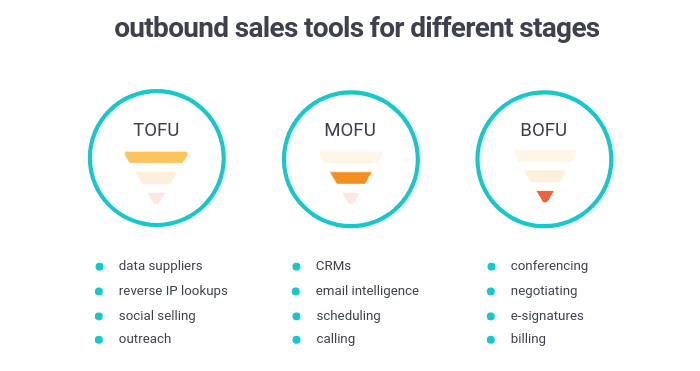
Here are a few of our favorite time-savers.
Intelligent Dialers
All outbound sales reps know that one of the most important metrics they’re measured against (other than overall conversion rate) is their call quota. It’s imperative that outbound sales reps get their phone calls completed in a timely manner.
Intelligent dialers, like Aircall, can compile your list of contacts, automatically dial their phone numbers, and integrate their contact info into your CRM. This kind of technology goes a long way in making your outbound sales calls easier and more manageable.
Click-to-Dial CRM
Click-to-dial within your CRM is a game-changer. This kind of functionality will allow you to pull up a contact’s complete information and dial from directly within their profile. This gives sales reps the ability to have the important demographic information right at their fingertips as they’re making the call.
LeadDesk is one example of a tool with this functionality. It can also click-to-dial from within spreadsheets or websites.
Email Automation
Email automation can save a significant amount of time in outbound sales. Sending emails, following up, booking meetings; there’s a lot of manual tasks that go into a strong outreach strategy.
Email automation tools like Yesware help make outreach easier and more effective. Yesware includes outreach tools like email templates and prospecting campaigns, as well as tools to dissect what’s working like email analytics and email tracking.
Local Presence Dialers
A local presence dialer, like Dialpad, automatically matches your outgoing area code to the area code of your prospect.
Area code may seem like an afterthought, but research shows that people are 4x more likely to answer a call from an area code that matches their own.
Voicemail Automation
It’s inevitable that outbound sales reps will encounter screened calls and voicemail boxes. And, in a role where time is of the essence, leaving voicemails for every unavailable prospect can get time-consuming in a hurry.
Voicemail automation platforms like Shape allow you to pre-record and select from a variety of outgoing voicemail messages that are personalized enough to make a connection, but automated enough to save time.
Reverse IP Lookup
Softwares that enable reps to identify website visitors via reverse IP searches can be a huge asset for outbound sales teams.
Lead Forensics is a great example of this kind of tool. It can identify your website visitors based on their IP address, which will give you a leg up in your first outreach attempt. Knowing that the lead has already visited your website can go a long way in warming up the relationship from the start.
E-Signature Platforms
There’s nothing worse than getting to the end of the funnel, only to have your prospect back out at the last minute.
Time-savers and convenience softwares can help streamline the entire process for the buyer, so they have no excuse to balk when it comes time to sign. E-signature platforms like DocuSign can ensure efficiency every step of the way.
See more here: Best Sales Prospecting Tools
Outbound Sales Best Practices
The outbound sales teams who sign the newest customers are the ones who take a strategic approach to the process. As we’ve outlined in this article, outbound selling is much more than spamming contacts on LinkedIn with a stock sales pitch.
Here are a few of our best tips for making outbound sales a lucrative and invaluable component of your sales approach.
Align With Your Goals
You should design your outbound approach according to your overall business goals.
If you haven’t yet, take time with your team (and, ideally, the executives at your company) to create goals using the SMART goal framework.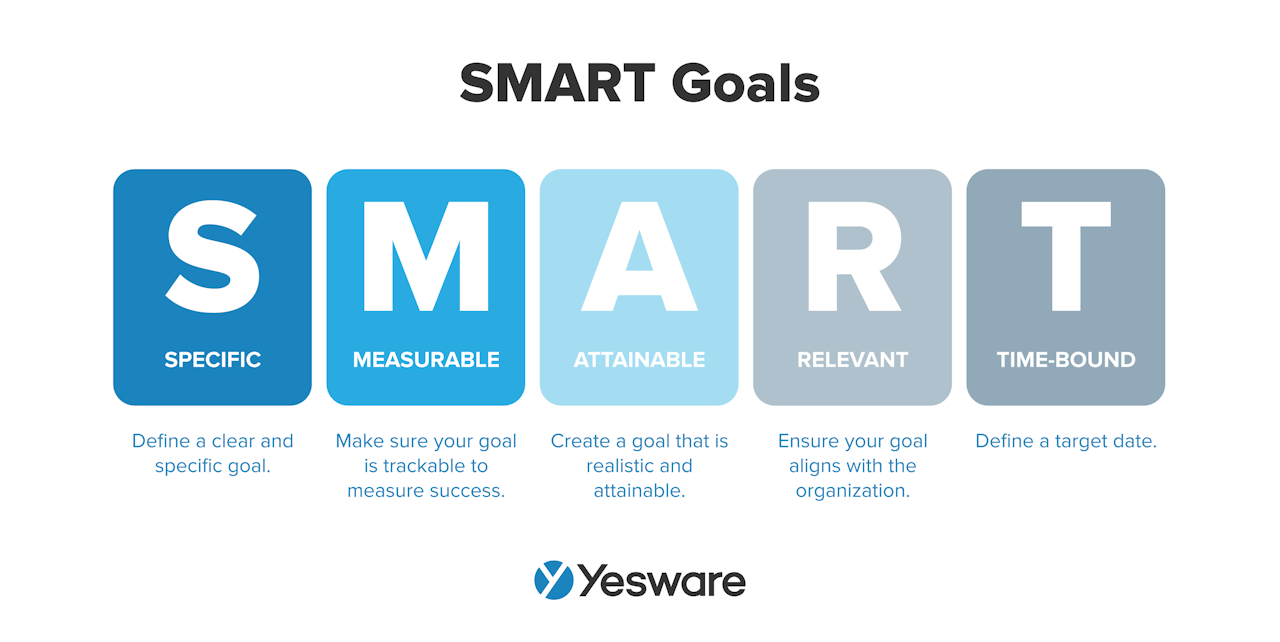 Once these well-defined goals are in place, it will be that much easier to identify and prospect your ideal customers through an outbound approach.
Once these well-defined goals are in place, it will be that much easier to identify and prospect your ideal customers through an outbound approach.
See the Bigger Picture
You may also want to consider creating a sales process map for your team or any other kind of overarching document that details the roles, processes, tools, and decision points your team will encounter throughout the sales process. Here’s an example:
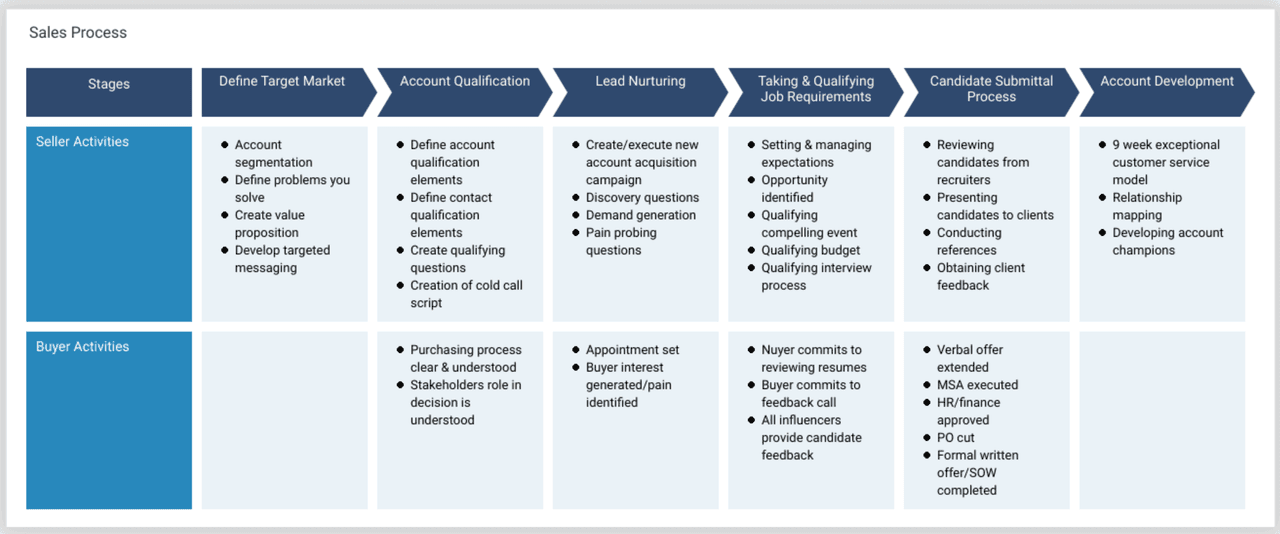
Remember, outbound selling is just one piece of a larger sales strategy; seeing how it fits into the bigger picture will enable your outbound reps to do their jobs more effectively and efficiently.
Be Succinct
It’s no secret that the vast majority of people hate being sold to. Prospects can smell a sales pitch from a mile away, and they won’t appreciate you beating around the bush to find a way in.
Be clear and concise in your messaging. Avoid being overly pushy. Remember, a lot of outbound work is most successful in the follow-up; you don’t need to get into all of the details on the first call.
Dig Into Pain Points
One of the most important parts of a successful outbound approach is completing as much research as possible before the first call.
Spend some time with your team developing your ideal customer profile (ICP). This will enable outbound reps to identify and get right to the heart of your potential client’s pain points.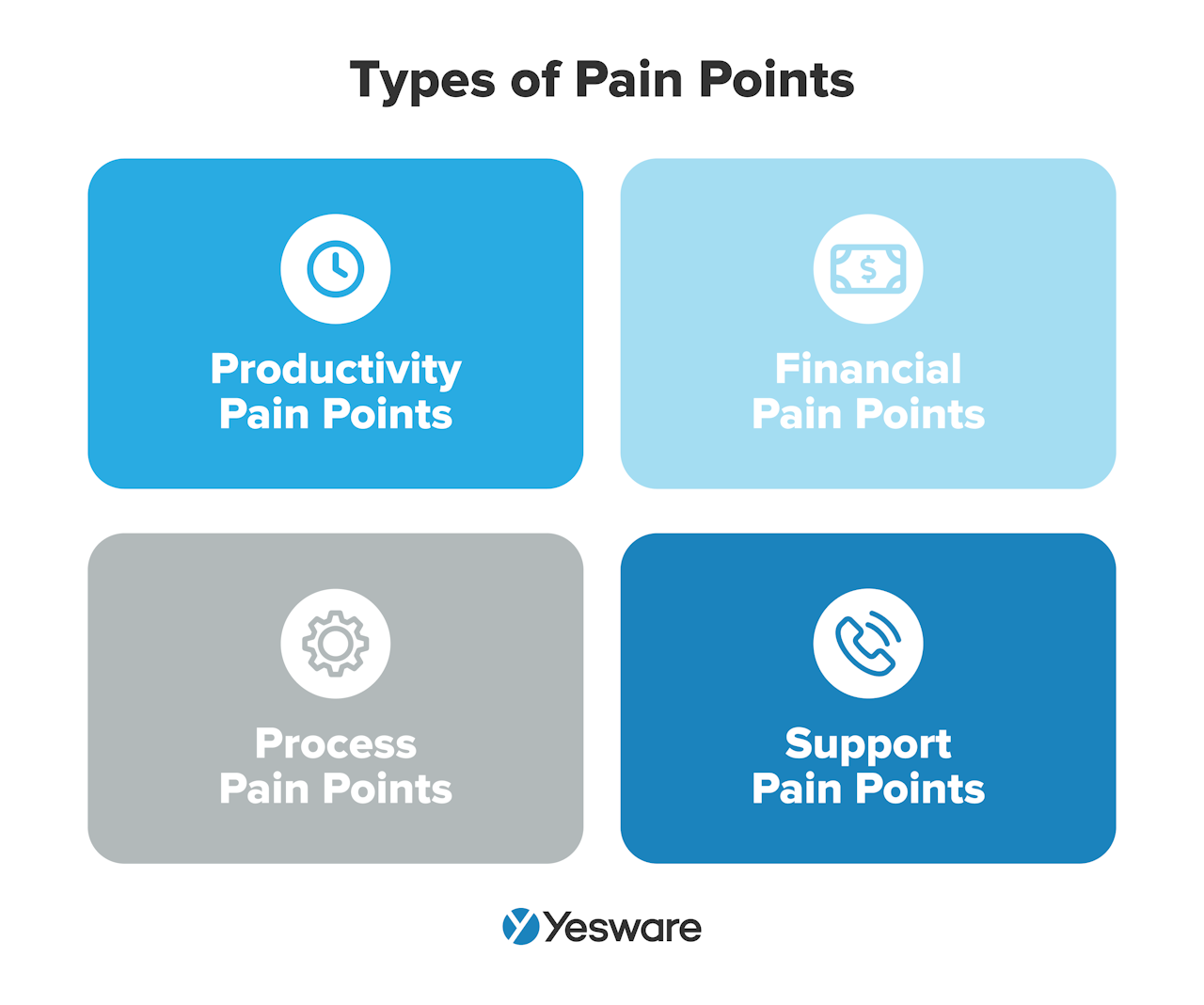
Find the Right Time
In a field where so much of your success relies on someone else’s actions (i.e., whether or not they answer the phone), every little bit of leverage helps.
With that in mind, there is a right and wrong time to make your way through your prospect list.
In our best time to send email study, we found that the best time to send email is 1:00pm and the second best time is 11:00am.
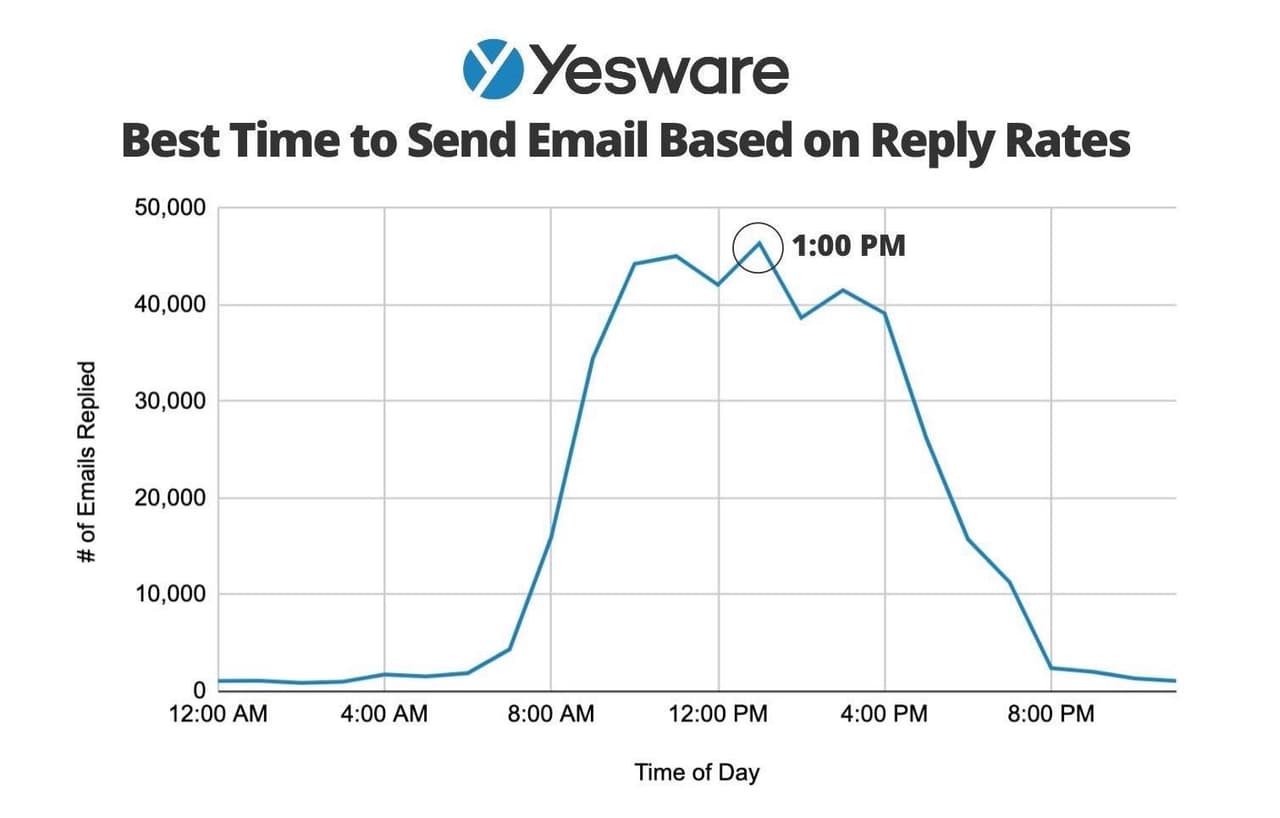
In a similar study on cold calling, findings suggest the best time to call is between 9:00am – 12:00pm. And remember — calculate your call times according to the prospect’s time zone, not your own.
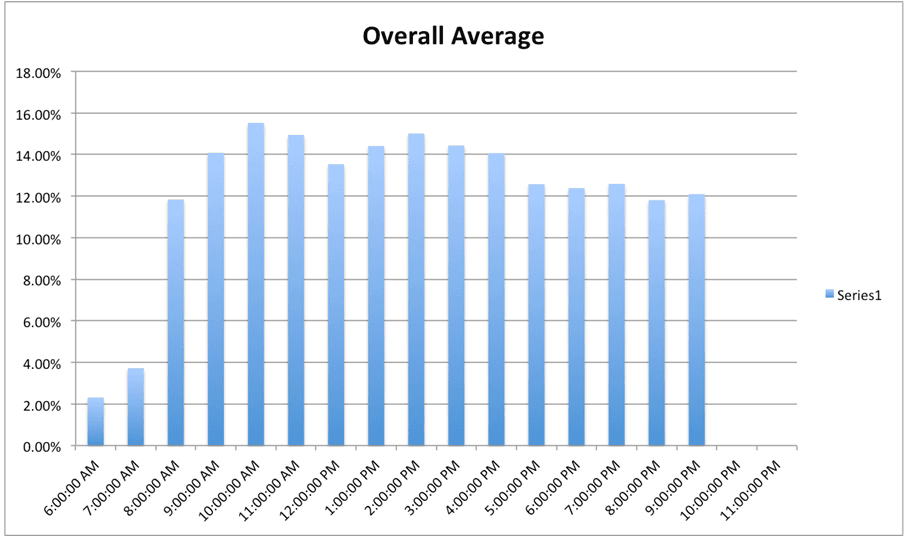
It’s important to test the best times to email and call yourself with your specific audience for the most accurate results.
Sales Metrics to Measure Outbound Sales Success
Fortunately, outbound sales progress is pretty straightforward to track. There are several sales metrics that can help sales managers and reps keep their finger on the pulse of how effectively their outbound sales program is running.
- New business revenue
- Projected pipeline value
- Outbound sales growth
- Outbound conversion rate
- Number of contracts sent
- Customer acquisition cost (CAC)
- Customer lifetime value (LTV)
- Productivity metrics
- Sales cycle time
- Calls to close ratio
- Average deal size
In general, teams look at metrics from three primary tiers:
- Top-level: Helps shine a light on big-picture, overall performance.
- Tactical: Show how effective your strategies, tactics, and activities perform in the field.
- Operational: Measure how well your team performs on a day-to-day basis.
A lot of insight can be gained from minute outbound productivity data. If you’re still not sure about how well your outbound sales strategy is working, consider tracking your operational sales metrics at a very small scale.
Micro-indicators like call fail rate, appointment set rate, call duration, and email open/response rates can all have a direct impact on the success of your outbound call strategy.
How Yesware Enables an Outbound Sales Strategy
Yesware, an all-in-one toolkit for sales professionals, can be a valuable tool in your outbound sales strategy.
Yesware gives you the tools to take action and the data to make decisions. And with integration taking less than one minute, you can start winning more business with these tools today.
Prospector
Yesware’s Prospector feature gives you instant access to verified work phone numbers, email addresses, LinkedIn profiles, and more.
You can use advanced search filters to drill down further and find your ideal customers.
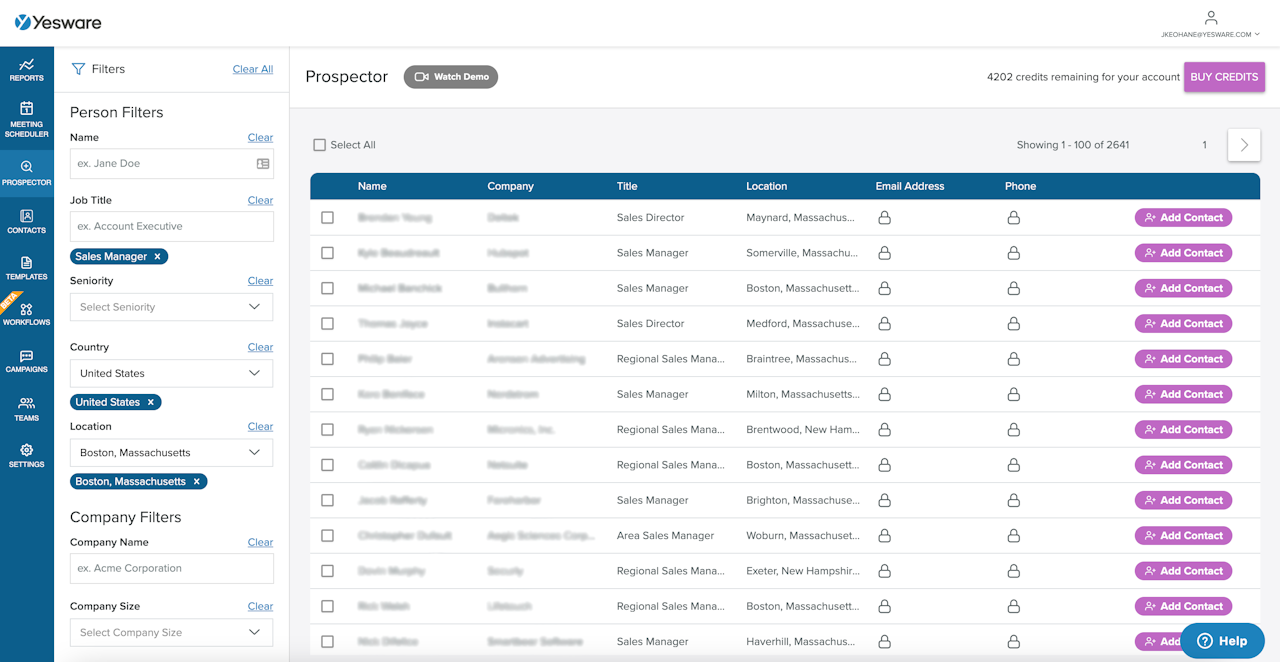
Then, instantly add thousands of contacts to your funnel to begin your outbound sales efforts.
Email Templates
Yesware’s Email Templates allow you to create personalized, automated outreach for all of your prospecting needs.
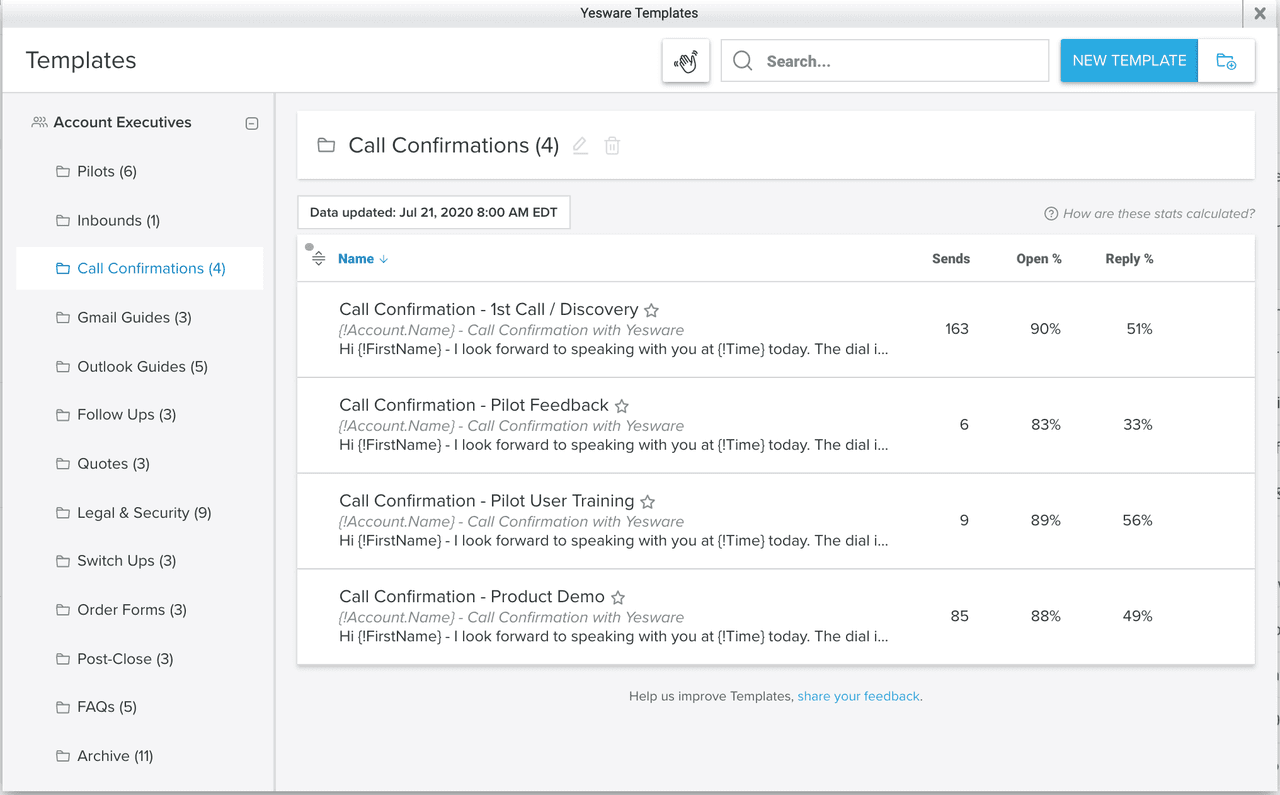
These templates offer all the ease of automated outreach but all the personalization of customized contact — the best of both worlds.
Email Campaigns
With your email templates, you can then create automated email campaigns that send on their own. Set custom times and cadence for each touch, then let Yesware do the work.
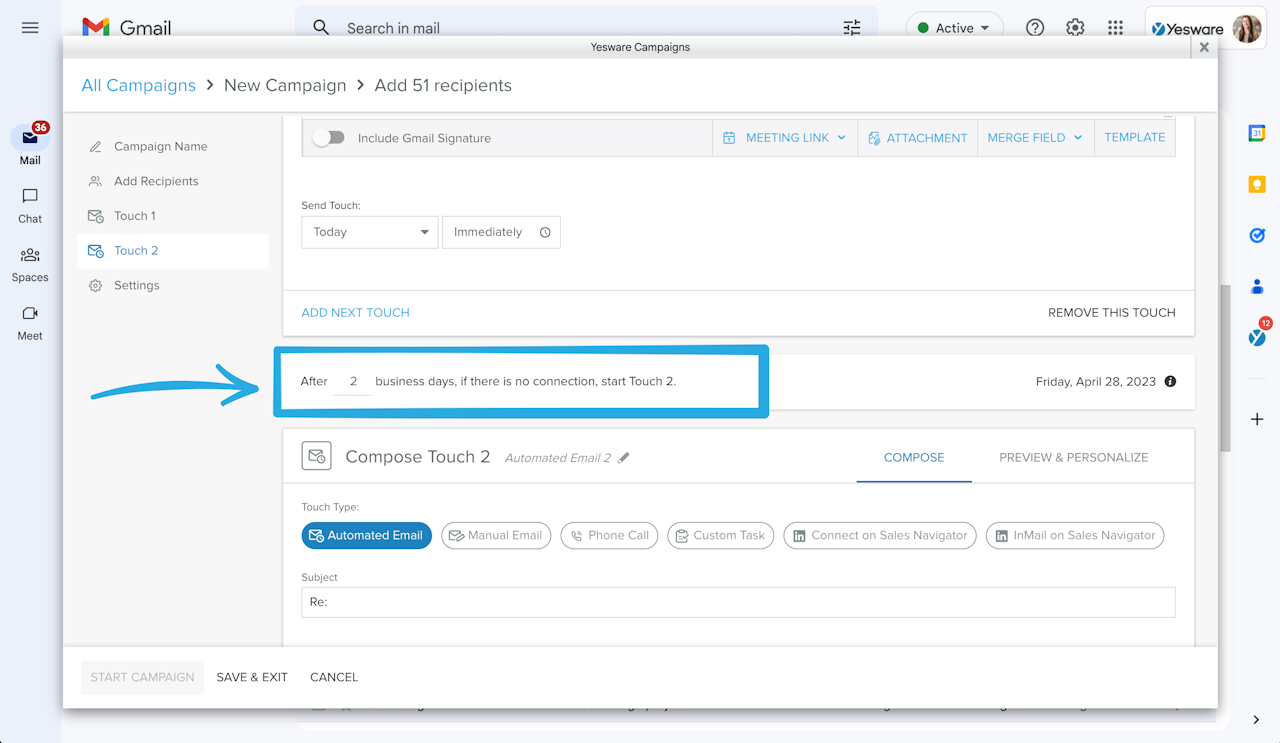
You can automate follow-up emails to go out when prospects don’t respond to your first outreach and remove recipients who reply or book a meeting automatically.
Email Tracking
Then, eliminate the guesswork with Email Tracking and know exactly when prospects are reading your emails, clicking on links, and viewing attachments.
![]()
Break it down even further with Yesware’s Attachment Tracking, where you can identify your best content and learn exactly how your prospects are engaging with it.
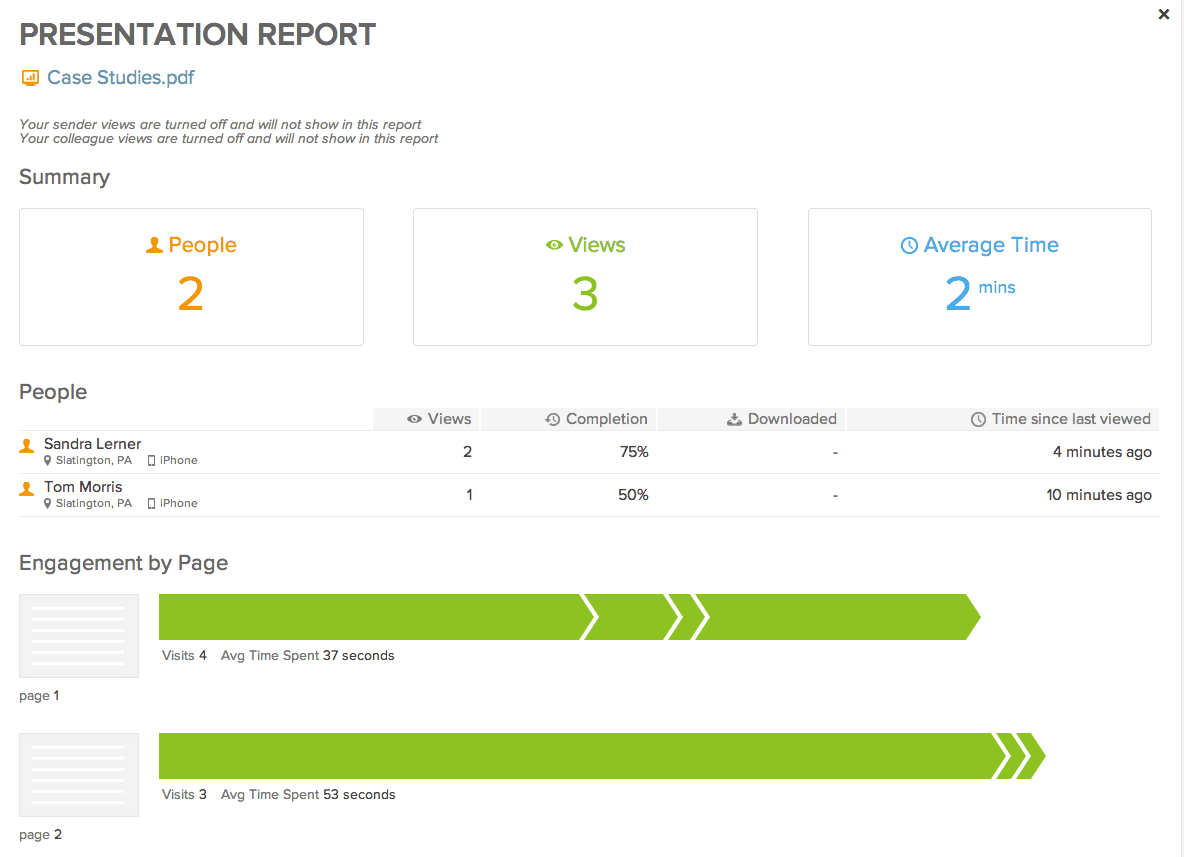
These tools allow you to see which content is viewed and when, so you can design smarter and higher-converting campaigns.
With the right tools and processes in place, outbound sales can be an invaluable approach to add to your toolbox.
This guide was updated on July 26, 2023.
Get sales tips and strategies delivered straight to your inbox.
Yesware will help you generate more sales right from your inbox. Try our Outlook add-on or Gmail Chrome extension for free, forever!
Related Articles
Casey O'Connor
Casey O'Connor
Jenny Keohane
Sales, deal management, and communication tips for your inbox

